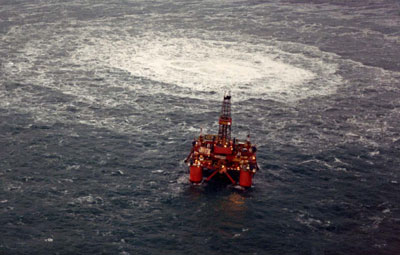Four North Sea regulators offer views on well control
It is rare that the regulatory agencies from the North Sea’s four leading hydrocarbon producers get together, but this is exactly what the IADC achieved on 13 April at the Well Control Europe 2010 conference & exhibition in Aberdeen.
Leading lights from the four, tackled a broad variety of regulatory issues pertinent to well control at a gathering of more than 120 delegates.

UK HSE: Donald Dobson, well engineering principal inspector, UK Health & Safety Executive warned that it is easy for regulators and the offshore industry to get distracted by the accidents that hurt people on a regular … slips, trips and falls and the handling of heavy objects.
“These are the things that are hurting people and we tend to take our eye off the ball in terms of major accidents, because they are low frequency yet of very high consequence,” said Mr Dobson.
He said there was a danger that risk may be underestimated and that complacency can set in.
“We also see a certain amount of poor planning for unusual, complex operations and we also note a lesser standard among well service activities than drilling operations.”
Referring to a study of well kicks in the UK North Sea, Mr Dobson said the majority over a 10-year period from 1999 were due to geological factors.
“They weren’t really readily preventable and most were handled well and in a timely manner. But there was a significant minority of incidents where human factors came into play. Some were preventable or more serious than they needed to be.
“I looked at all the incidents over an 11-year period and one area where we see underestimation of the risk is in the Southern North Sea.”
Referring to kicks in the Zechstein sequence especially, he said they were mostly brine-based events but that some were gas and could contain high levels of H2S.
“What this leads to is that people assume from their experience of these Zechstein kicks is that they are easily bled down and are not a major hazard.
“That can lead to people cutting their casing programs and trying to drill the Zechstein sequence without having cased off the Bunter sands. If you have a kick you can end up with an underground blowout if you haven’t cased it off.”
Arne Enoksen – principal engineer, Petroleum Safety Authority, Norway paid considerable attention to a gas incident in the Snorre field late 2004. It was injured, it was a very dangerous situation, moreover one triggered by failure to follow proper procedures.
“What triggered the situation, and why?” asked Mr Enoksen.
“The original well intervention program was changed outside sufficient formalities of a qualified MoC process a decision was made to carry out perforations in the well before the production tubing was cut and pulled.
“This was followed by not performing the identified and planned risk assessment related to pull the 7 5/8-in. scab-liner without BOP-ram capacity (shear and pipe ram size)-resulted in the detailed operation program “replanning” on board the facility which introduced very obvious risk implications.”
He spoke of “fatal decisions” made by offshore and onshore engineers based on a lack of knowledge of weaknesses in the well – namely a combination of wear in 9 5/8-in. production casing and 7 5/8-in. casing straddle.
Investigations revealed a litany of non-conformities including: failure to comply with governing documentation; deficient understanding and implementation of risk assessments; deficient involvement of management and a severe breach of well barrier requirements.
Ferdinand Gubler, senior inspector, State Supervision of Mines –Netherlands, focused on the prevention of blowouts. He said there was an expectation on the part of the department that, when an operator was contemplating drilling a difficult well, the operator would discuss the challenge beforehand.
“This gives us time to discuss it with them and also with our sister organizations in the UK, Norway and Denmark,” he explained.
He said, while a company might spend three to six months designing a well, the department would look at the plan for one day at most, but that very comprehensive details must be provided by the operator.
“Very important is the fact that, for every well drilled in the Netherlands, there has to be a drilling report lodged every day before 10am,” said Mr Gubler.
“With well reports coming in every day, we can see problems coming. The morning reports enable the department to identify deviations from drilling programmes and to pick up the phone to quiz the operator concerned.
“We ask questions, we intervene when required … perhaps once in two years there is a well control situation.”
Rolf Kallesoe of the Danish Energy Agency said Denmark had experienced few well control issues. But there had been incidents.
“We had a blowout back in 1977 (Vagn) but the well died within three or four days of the blowout happening. No-one was hurt,” he said. “One issue we have had with the oil companies especially … not the drilling companies … is how frequently BOPs should be tested. The oil companies who are paying … they like 21 days; the drilling companies do what the moneymen tell them; and that has been a discussion.”
The choice became, should the BOP test interval: 14 days or 21 days. In the event, the decision became: “At first possible opportunity after expiration of 14 days since last BOP test, a new BOP test shall be performed.”
Mr Kallesoe added that the DEA researched the BOP issue over a five year period and arrived at the conclusion that: “One to two malfunctions were found during BOP-testing per year per rig.”
He observed that there was no industry database available on malfunctions found during BOP-testing.




